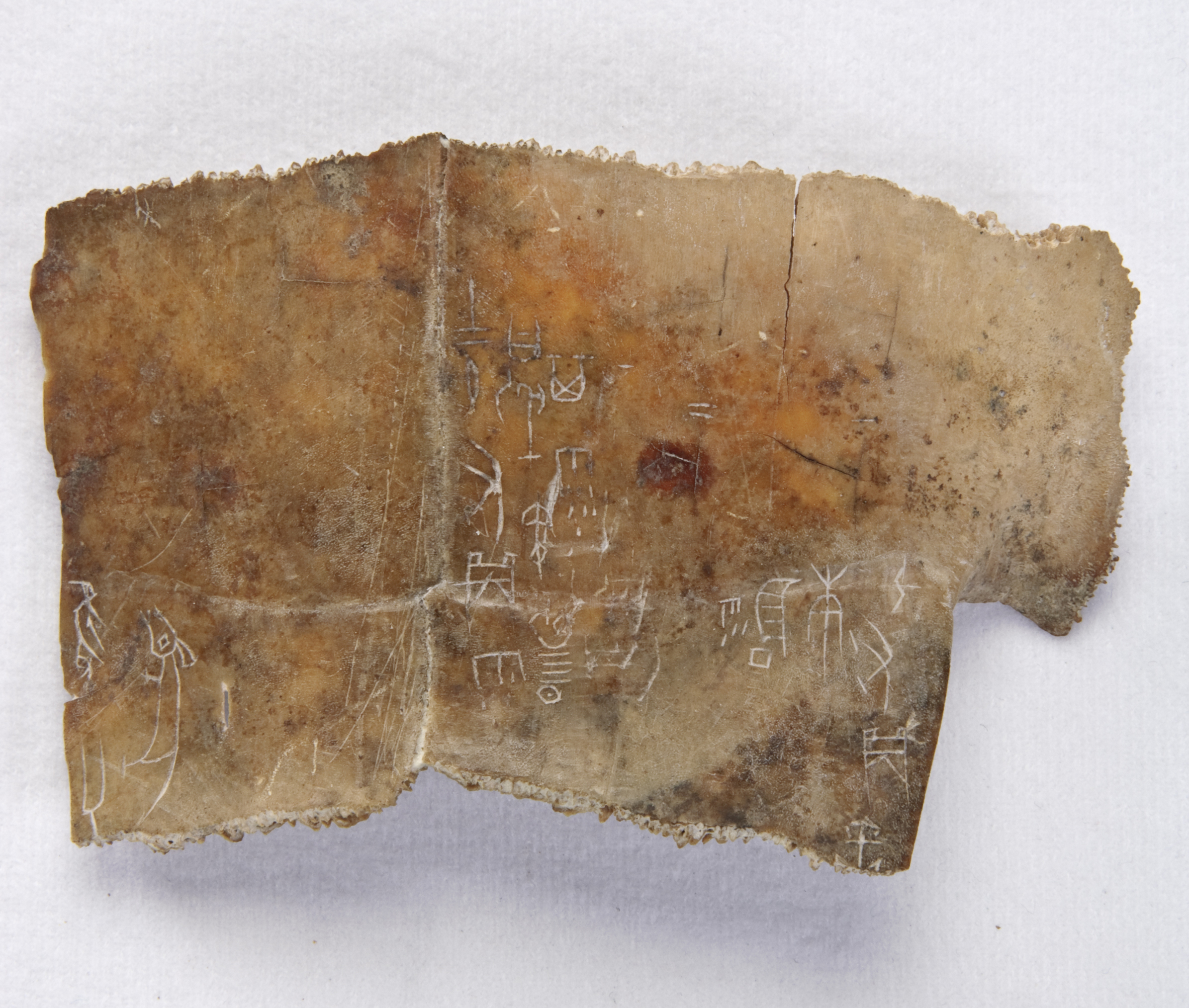The Shang dynastythe earliest Chinese dynasty verified by scholars, ruling from ca. 1600 to 1050 BCE. (1600–1050 BCE) saw advancements made in mathematics, astronomy, and bronzea mixture of copper, tin, and often lead that produces a strong metal. castingan object made by pouring molten metal or other material into a mold. technology. It is considered the first historical dynastya series of rulers from a single family. of China, meaning it left behind written records. These records are preserved as engravings cut into the so-called oracle bonesox bones or tortoiseshells used as tablets by shamans of the Shang dynasty who wrote requests on them to royal ancestor spirits, asking for guidance on important events or information about the future..
The term “oracle bone” refers to ox scapulaeshoulder blade bones. (or shoulder blade bones) and tortoiseshells used by Shang(shahng) rulers for divinationthe act of foretelling future events or revealing hidden information with the aid of supernatural powers.. Oracle bones were said to offer a conduit to the spirits of royal ancestors, legendary figures from the past, nature deitiesdivine beings; gods and/or goddesses., and other powerful spirits. Shang kings asked about natural events, illnesses, dreams, and forecasts for hunting and military endeavors.
Under the direction of the king and his diviner, the bones of cattle and water buffalo and the shells of tortoises were scraped clean, polished, and perhaps soaked. When dry, the bones or shells were chiseled to produce rows of grooves and pits. During the rituala set pattern of behavior for a religious or other kind of ceremony., a diviner would insert a heated rod into the bottom of the grooves and pits to produce hairline cracks on the opposite side of the bone or shell. The diviner requested information and guidance from the spirit of a royal ancestorsomeone from whom you are descended. In Western thought, it is usually more distant than a grandparent; however, in Chinese culture, deceased parents and grandparents are considered ancestors. and then interpreted the direction of the cracks to provide answers to the king’s question. To record the king’s question, a scribe would then carve it onto the bone or shell surface relative to the cracks.
Later, the scribe would carve the outcome onto the surface of the bones or shells. The tortoiseshell fragment from the collection of the Arthur M. Sackler Gallery, for instance, has three groups of finely engraved inscriptions. Two of them relate to the question of rain; the third reports on the outcome of a successful deer hunt. Most oracle bone inscriptions contain four parts: an introduction, a chargethe topic of an oracle-bone inscription. (the topic), the prognosticationthe interpretation of the cracks produced on an oracle bone during the divining process. (interpretation of cracks), and verificationthe actual outcome of the oracle-bone inscription topic. (the actual outcome). For example, one oracle bone outside the museum collection reads:
Introduction: “On renzi (day 49), [the king] made cracks and divined:
Charge: ‘We will hunt at Wu; going and coming back there will be no disasters.’”
Prognostication: The king read the crack and said: “Auspicioussuccessful or prosperous; a sign of future success.” This was inscribed.
Verification: “[We] caught one wild buffalo, one tiger, seven foxes.”





